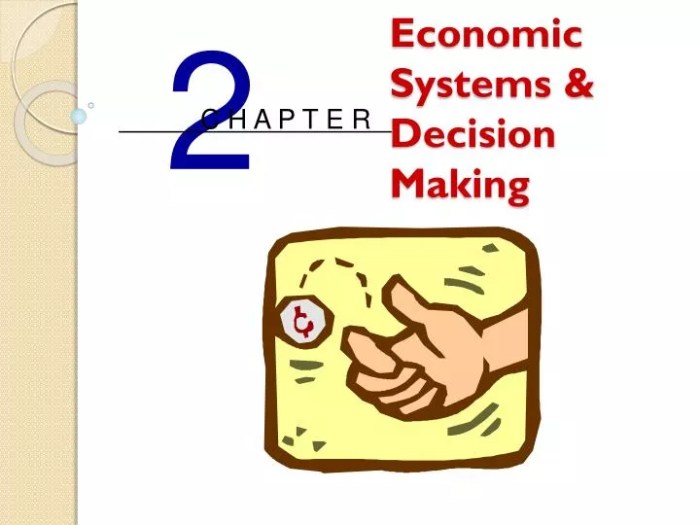Guided reading activity economic systems and decision making – Embarking on a guided reading adventure, this activity delves into the fascinating realm of economic systems and decision-making processes. Understanding these concepts is crucial for comprehending how societies allocate resources and make choices that shape their economic destinies.
Economic systems, encompassing a diverse array of models, dictate how goods and services are produced, distributed, and consumed. From centrally planned economies to free market systems, each approach carries unique implications for resource allocation and economic outcomes.
Economic Systems: Guided Reading Activity Economic Systems And Decision Making

An economic system is a way in which society produces, distributes, and consumes goods and services. There are three main types of economic systems: traditional economies, command economies, and market economies.
Traditional Economies, Guided reading activity economic systems and decision making
- Based on customs and traditions.
- Little or no technological advancement.
- Example: Indigenous tribes.
Command Economies
- Government makes all economic decisions.
- Individuals have little or no economic freedom.
- Example: North Korea, Cuba.
Market Economies
- Individuals and businesses make economic decisions.
- Supply and demand determine prices.
- Example: United States, United Kingdom.
Decision Making
Decision making is the process of choosing between two or more options. It involves several steps, including identifying the problem, gathering information, evaluating options, and making a choice.
Factors Influencing Decision Making
- Personal values
- Past experiences
- Cognitive biases
- Social norms
Guided Reading Activity

This activity will help you understand economic systems and decision making. Read the following passage and answer the questions below.
Passage
In a traditional economy, the government plays a minimal role in economic decision-making. Instead, customs and traditions guide production, distribution, and consumption. In a command economy, the government makes all economic decisions. This includes what goods and services are produced, how they are produced, and who receives them.
In a market economy, individuals and businesses make economic decisions based on supply and demand.
Questions
- What is the main difference between a traditional economy and a command economy?
- How does supply and demand affect decision-making in a market economy?
- Identify three factors that influence decision-making.
Resources
General Inquiries
What is the purpose of a guided reading activity?
Guided reading activities aim to enhance students’ comprehension and critical thinking skills by providing structured support and guidance as they navigate complex texts.
What are the key components of an economic system?
Economic systems typically involve factors such as resource allocation mechanisms, property rights, and the role of government in economic decision-making.
How does decision-making influence economic outcomes?
Decisions made by individuals, businesses, and governments regarding production, consumption, and investment have significant implications for economic growth, stability, and distribution of resources.